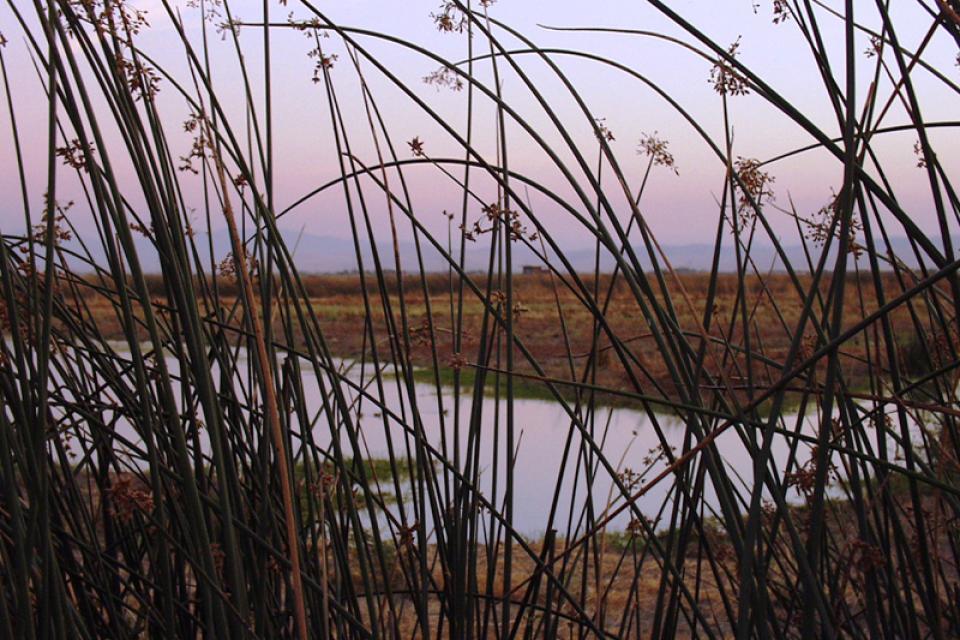Kesterson Reservoir
The former Kesterson Reservoir in the San Joaquin Valley provides a cautionary tale of the environmental impacts of agricultural drainage.
Completed in 1971 by the Bureau of Reclamation, Kesterson included 12 evaporation ponds for irrigation drainage water. The reservoir, a part of the San Luis National Wildlife Refuge, was an important stopping point for waterfowl. In the 1960s officials proposed a 290-mile drainage canal to the ocean known as the San Luis Drain. Only 85 miles were completed, however, and work on the drain halted in 1986 after scientists discovered bird deformities due to drainage at Kesterson.
Over time, naturally occurring selenium—paradoxically an essential dietary mineral that can adversely affect organisms when concentrated at toxic levels—built up in the agricultural drainage water, making it quite salty, and accumulated in the evaporation ponds. This selenium and other drainage-related elements caused bird deaths and deformities.
Since the discovery of these problems at Kesterson in 1983, scientists have increased their efforts to understand the effects of selenium and other trace elements on the environment when they are concentrated through human activities. The discovery of the reservoir’s dead and deformed birds also led to an investigation that found selenium across much of the West
At Kesterson, scientists concluded that selenium toxicity passed up through the food chain caused 88 percent of bird deaths and deformities.
The reservoir also gave rise to the term the “Kesterson Effect”— the biological accumulation of selenium traced “from rock to duck,”- following a paper published by the U.S. Geological Survey in 1994.
After the discovery of the dead and deformed birds, tests were performed on the drainage water at Kesterson. Selenium levels ranged from 85 to 440 parts per billion (one ppb is equal to a teaspoon of material from an Olympic-sized pool). Federal officials took immediate steps to reduce the birds’ exposure to the waters and find solutions.
Kesterson Closing
California’s State Water Resources Control Board ordered the closure of the reservoir in 1985.
Once drainage flow into the reservoir was halted, the water in the evaporation ponds at Kesterson Reservoir was allowed to evaporate. The State Board also required the Bureau of Reclamation to fill about 600 acres of depressions to cover the remaining selenium hot spots.
Currently, the Westlands Irrigation District is paying for all monitoring at Kesterson Reservoir, which exceeds $1 million annually. The drainage costs are added to the water rate that water users are charged.
Kesterson Aftermath
State and federal agencies see Kesterson as a forewarning of what could happen in similar drainage areas, particularly the Tulare Lake Basin of the Central Valley.
Since the closure of Kesterson, officials have concentrated on identifying selenium hot spots throughout the West, devising remediation strategies and furthering the scientific understanding of its effect on fish and other wildlife. The federal government is central to the effort, particularly Reclamation, which manages many irrigation projects.









